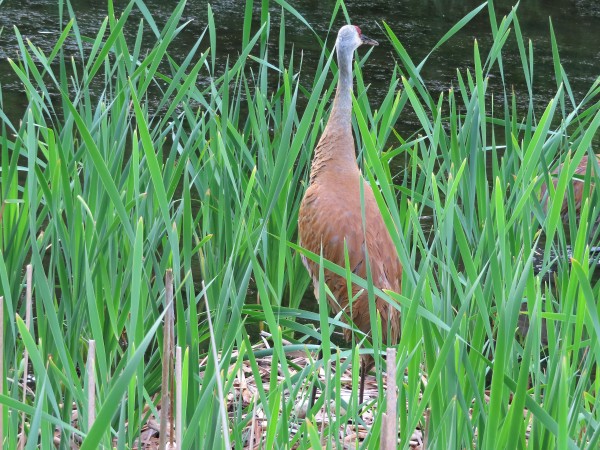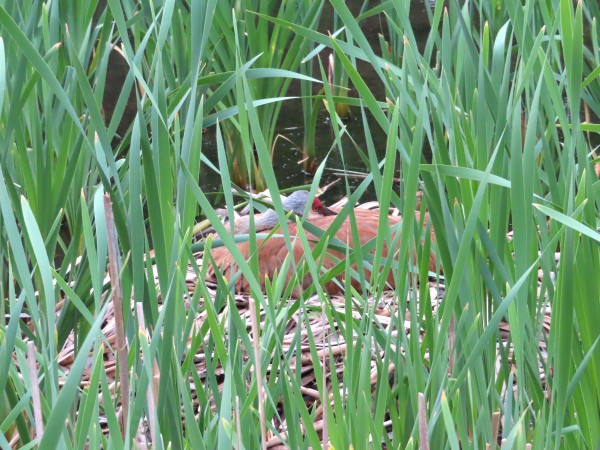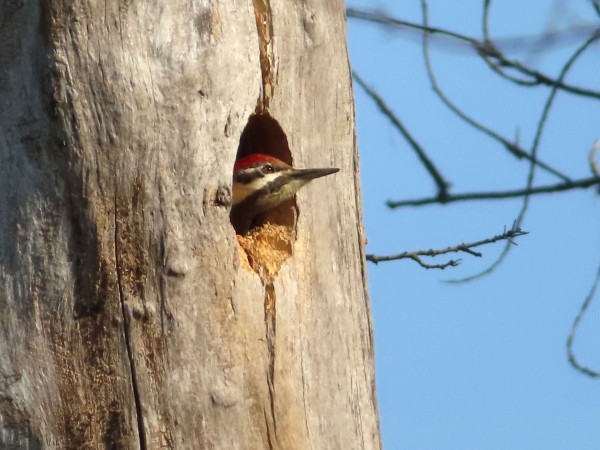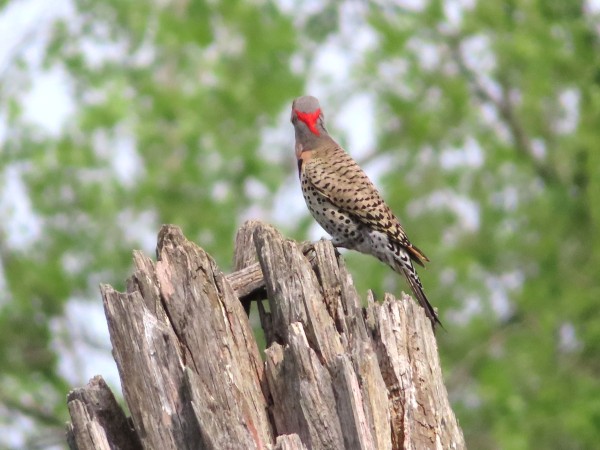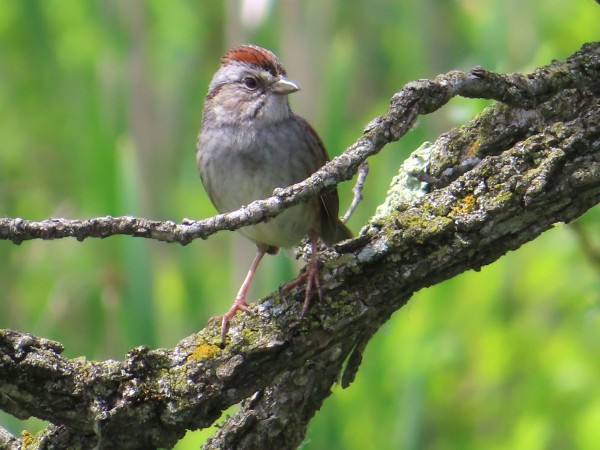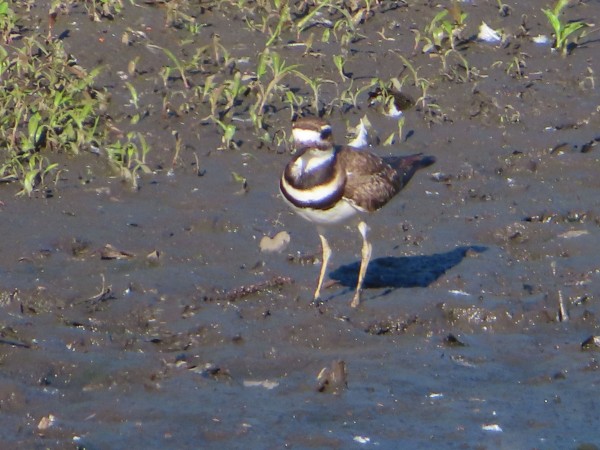Chuck's Birding Report #116
31 May - 06 June 2022
Dear fellow flock of birders,
We’ve all been watching the Sandhill Crane nest at Teal Pond since it was first observed on April 30th. I really liked what the Arb staff did to protect the cranes from intrusions by visitors. The signs encouraged people to be quiet and respectful as they approached the dock and nest at Teal Pond. The canvases were also lowered and the broken windows removed so people could look through open square holes to view the cranes in the nest. I’m sure this reduced the human exposure to the cranes. I thank the Arb staff for helping protect the cranes. The last day that I observed a crane on the nest was June 1 at 7:00 pm. That turns out to be about day 32 of incubation. On June 2 I went to the nest at about 7:00 am and saw that the nest was empty. That would have been about day 33 of incubation. What happened to the Sandhill Cranes and their eggs? One of our birders had seen a crack and hole in one of the eggs a couple days earlier so 1 or 2 baby colts could have hatched and left with their parents to feed somewhere on the prairie. I have been looking for them out on the prairie but so far have not found them. Another possibility is that the eggs or colts were predated by some animal, for example a raccoon, around the time of hatching. This happened several times a few years ago when Sandhill Cranes were nesting in the marsh at Icke Boardwalk. I hope all our birders will continue to look for the Sandhill Cranes with 1 or 2 colts in the prairies of the Arb. Included are two photos of the Teal Pond Sandhill Cranes. One shows a crane with its head partially tucked under its wing but its eyes are still open. The other photo shows a Sandhill Crane standing on the nest. If you look closely at the distal ends of its legs you should be able see 2 crane eggs.
There are Sandhill Cranes with colts in the area around Skunk Cabbage Bridge. There are also Sandhill Cranes with colts at the southern end of Gardner Marsh. So there are some success stories.
Another site we have been watching carefully were the holes in a snag west of Pond 2 that contained both Pileated Woodpeckers and Northern Flickers. The Pileated Woodpeckers were in a round nest hole and the Northern Flickers were in a rectangular nest hole just a few feet above the PIWO nest hole. I thought of it as a two story woodpecker condo. The Northern Flicker hole has not changed and I’ve seen NOFLs sticking their heads out of the hole often. I’ve also seen Northern Flickers flying to that hole. This has not been the case for the Pileated Woodpecker hole. On June 1, both in the morning and the evening, I saw a European Starling with its head sticking out of the Pileated Woodpecker’s hole. How could a Pileated Woodpecker allow a European Starling to take over its nest? On June 2 I saw two European Starlings going in and out of the nest hole. I did not check the holes on June 3-5 but did check the hole today, June 6. Guess whose head was in the hole today? That’s right, the Pileated Woodpecker. Yeah, they returned. I did read that starling will take over cavities in trees from other birds. They can also destroy eggs of other birds. Okay, now the question is whose eggs are in the cavity of this hole? Are they Pileated Woodpecker eggs, European Starling eggs or a combination of both? I guess we will have to watch the hole and see what young appear. Included are two photos of the Pileated Woodpecker hole. One shows the Pileated Woodpecker while the other shows the head of the European Starling.
I’ve also included a photo of a Northern Flicker with its head turned away from us. It shows the red crescent on its nape or back of the neck. It’s such a distinctive feature of the Northern Flicker.
The most common sparrows in the Arboretum are the Song Sparrow, Swamp Sparrow and Chipping Sparrow. I’ve included a photo of the Swamp Sparrow.
I’ve seen multiples of the Yellow Warbler and the Common Yellowthroat this past week. I have not seen the American Redstart but I do pick it up on my Merlin app so it is around.
The two most brightly colored birds in the Arb are the Rose-breasted Grosbeak and the Baltimore Oriole. They often sing in the Teal Pond Marsh area. I have heard the Rose-breasted Grosbeak sing the same song over and over again this past week. He must be looking for a mate. A photo of the male Rose-breasted Grosbeak is included.
For the past couple weeks we have been seeing a Killdeer walking along the mudflats of Pond 2 and the smaller pond just south of Pond 2. Its two black stripes on its neck are very distinctive. Last year we saw one or two small, fluffy fledglings around the periphery of these two ponds. Keep an eye out for these little guys. They are so cute. A photo of the adult Killdeer is included.
My last assortment of birds is a YouTube video produced by Cynthia Carlson. As I’ve mentioned before she has several excellent bird videos up on YouTube. Thank you for your remarkable videos. This one is a 6 and a half minute video of a number of birds at Picnic Point Marsh on the north side of Picnic Point in the UW Lakeshore Nature Preserve. I especially like the images of the Sandhill Crane adults and colts as well as the Prothonotary Warbler. Here is the link for the video called Morning in the Marsh.
That’s the Arboretum bird report for the past week.
I wish all of you good health and good birding too,
Chuck

